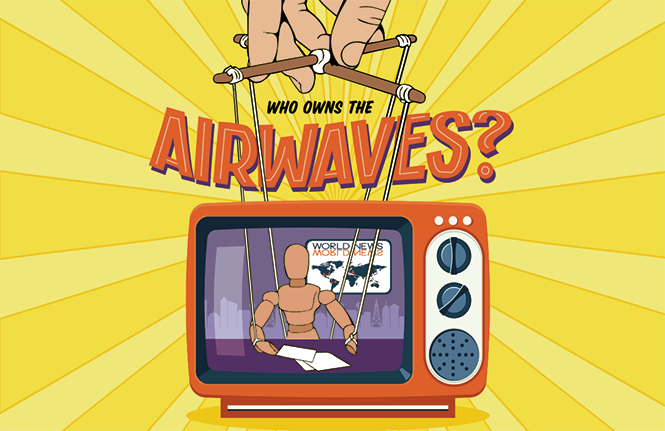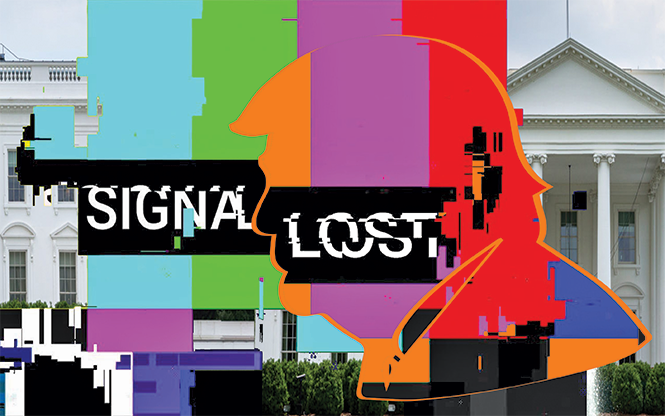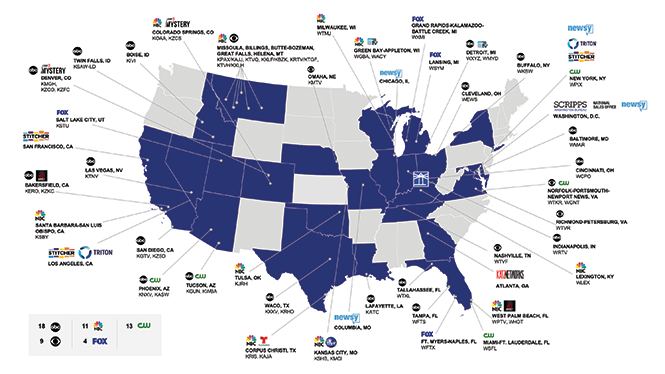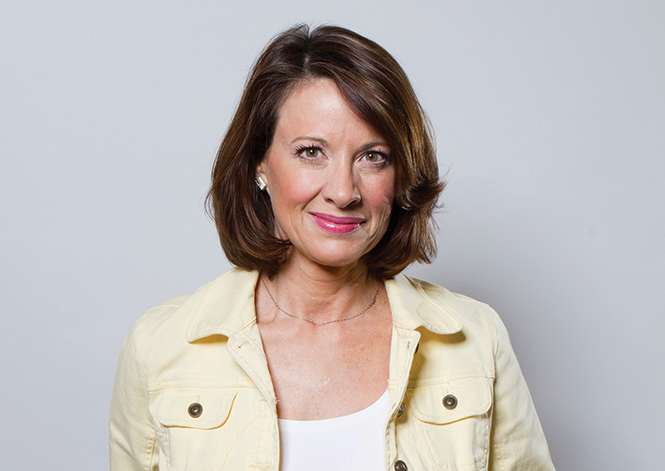Who Owns the Airwaves?
TV frequencies may belong to the public, but four media giants in Utah hope to get inside your head.
By Benjamin Wood @BjaminWoodThe outlier in that sentence is KSL, uniquely owned since its inception by The Church of Jesus Christ of Latter-day Saints and expected to be so owned until the collapse of the faith or Judgment Day, whichever comes first.
But at KUTV (CBS 2), KSTU (Fox 13) and KTVX (ABC4), the ownership landscape has been rocked by tectonic shifts. And—like Salt Lake County in 2020—it's not yet clear whether the ground has stopped shaking.
First though, know this: Because broadcast frequencies are scarce, and the airways are public by nature, the Federal Communications Commission regulates who is licensed to own and operate on those frequencies. Single station owners are limited from reaching more than 39% of national TV audiences and they cannot own more than two stations in most TV markets (although there are numerous exceptions, waivers and loopholes to those rules).
Craig Wirth—a longtime broadcaster currently with ABC4 who also teaches journalism at the University of Utah—said the changes in Utah have less to do with the strengths or weaknesses of the local market than they do a national game of chess between the major broadcast groups.
Economic pressures, increased competition and federal deregulation have pushed the industry toward conglomerate owners, he said, with chains absorbing other chains and shuffling stations in order to maximize their footprint.
"Television is not the great gold mine that it used to be," Wirth said.
While ownership is never permanently settled, Wirth said he expects more stability in the market going forward. And while the prospect of massive, faceless, out-of-state owners can appear threatening to local news content, Wirth said many of those owners are committed to journalistic integrity and that station employees can be a buffer against corporate agendas.
"I don't feel that great concern that some people do," Wirth said. "You still have local reporters covering local stories."
The following report is based on multiple interviews with current and former Utah journalists. The author also previously worked in both The Salt Lake Tribune and combined KSL/Deseret News newsrooms.
Takeover Makeover
For Fox 13 general manager Tim Ermish, the station's 2019 acquisition by the Ohio-based E.W. Scripps Co. was like they "won the lottery." He described the preceding years as an "unsettling" time for KSTU, a relatively generous term for a period that saw the station bandied about like a trading card as the nation's mega-conglomerates jockeyed for market positioning.
"We didn't change any of our journalistic integrities," Ermish said. "[Scripps'] commitment to journalism is at the core of their values, and they're in it for the long term. Whereas, some of our prior owners were private equity and were just holding onto us for a bit."
That optimism is largely shared, in public and private, by members of the Utah press. E.W. Scripps is a name, like Joseph Pulitzer, that is synonymous with capital-J legacy journalism, and while that's no guarantee of success or quality, it carries both weight and responsibility.
Before Scripps, Fox 13 was owned by Chicago's Tribune Media—nothing to do with The Salt Lake Tribune—a company that was absorbed in 2019 by the ABC4-owning Nexstar Media Group. Since federal rules prohibit the ownership of two-out-of-four top stations in a local market, it prompted the sale of Fox 13 to Scripps.
To add complexity, the Nexstar-Tribune Media merger came on the heels of a failed attempt by the KUTV 2-owning Sinclair Broadcast Group to absorb Tribune Media, which similarly would have required the sale of Fox 13 to a new owner.
But Sinclair's plans were sloppy and flew flagrantly in the face of the Federal Communications Commission's already lax ownership rules. And despite Sinclair's worn-on-its-sleeves friendship with the current occupants of the White House, the company was slapped with a record-steep $48 million penalty.
And in a twist that seems stranger than fiction, the $48 million penalty was prompted in part by Sinclair stations airing segments produced by Utah's Huntsman Cancer Institute without disclosing them as paid content. A spokesman for the FCC declined to comment on the status of the penalty and said the anonymous complaint that triggered the commission's investigation into the Huntsman Cancer Institute segments is not publicly available.
With the dust relatively settled, Utah's television market is now owned by the single-most-influential entity in the state and three conglomerate interlopers of varying pedigrees.
Nexstar has a reputation as a dispassionate penny-pincher, short on local station investment but relatively hands-off on the editorial side. Scripps has a hopeful face but is tested by the same market pressures as any legacy newsroom and is the smaller of its outsize counterparts. And to prove it wants to play in the big leagues, Scripps recently blacked out coverage for DISH customers in 31 states as a negotiating tactic for higher rates.
And then there's Sinclair, which acquired KUTV 2 in late 2011. Owned by the family of founder Julian Sinclair Smith, Smith's sons are known for donating heavily to Republican causes.
Hostage Videos
If Fox 13 and Scripps is a match made in heaven, then KUTV 2 and Sinclair is something akin to a forced marriage.
Both class clown and big bad wolf in the journalism community, Sinclair is the nation's second largest owner of local TV stations—just behind ABC4-owning Nexstar.
Sinclair—with a horse in the 2020 race and a penchant for micromanagement—has used its position of strength to feed a nakedly one-sided, conservative advocacy effort that's taken on a particular zeal during the Trump presidency.
Sinclair outlets have been forced to air ham-fisted "must run" segments and, in 2018, on-air personalities were made to read a disingenuous, anti-fake news screed in what came to be known in media circles as the "hostage videos."
But current and former reporters say top-down pressure from Sinclair has eased somewhat and that—aside from the Maryland-produced must-run segments—local outlets are given wide editorial latitude to produce community content.
One reporter said that while there is a tension between the station's employees and its owner, the larger issue is the public perception of Sinclair and how it can undermine trust in the work done by Utah professionals.
"It feels like all of the earnest work you do every day to find all sides of the story is irrelevant if people assume you're just a shill for Sinclair's politics," the reporter said.
In good circumstances, a corporate owner will provide stations with down-the-middle national and international reporting to fill gaps in the schedule, similar in function to a newspaper wire service. In ideal circumstances, they would use their size to invest in competitive markets and give stations a leg up on the competition.
But with Sinclair, the corporate content is of such shoddy quality that many stations—including KUTV—elect to bury it on the weekends and other lesser-viewed hours of the weekly schedule. One such piece aired last month, all-but-endorsing a baseless conspiracy theory that the novel coronavirus had been intentionally manufactured by Dr. Anthony Fauci, the nation's top infectious disease expert and an inadvertent foil to President Donald Trump's all-smiles mischaracterizations of the pandemic.
Sinclair responded to the backlash against the segment by saying it would be postponed and "reworked" before airing in additional markets.
At the time of the hostage videos, the left-leaning Alliance for a Better Utah criticized Sinclair for co-opting local news for political purposes. But Chase Thomas, ABU's executive director, said his organization's criticisms don't necessarily extend to KUTV 2.
He credited the station with maintaining independence from its owner and said he sees no clear and present danger—with KUTV 2, specifically, and Utah's other stations, generally—in the local content reaching Utah's living rooms.
"I love our Utah reporters, and I don't think any of them are trying to put super obvious slanted bias in their work," Thomas said. "I feel like we can trust all of our major media here in the Utah market."
Prophet-ability
Spencer Hall, a former KSL.com news director, said conversations around media ownership tend to mimic a broader "myth of objectivity" in journalism. Ownership has an effect on reporting, he said, as does the background of individual reporters, editors and station managers.
"I think it's always been silly for reporters to act like they're objective," Hall said. "You studied at a university, you grew up a certain way, you're from somewhere. Your experience matters, and I think the real benefit to your reader is to acknowledge who you are and what you're bringing to the table."
Hall said that while the Deseret News competes with the Tribune and KSL competes with its rival stations, there's no analogous counterpart in the state to the church's multi-platform media organization, which combines online, print, television and radio news reporters in one workspace on 300 West.
Hall said that singularity has the effect of taking squabbles that would normally play out across town and moving them into the shared newsroom, despite an outward appearance of unified, Temple Square-approved voices.
"Any time we do a story that involves the church, people think that the prophet himself walked across the street and handed in the script," Hall said. "It's just, simply, not true."
But Hall added that while corporate ownership does not dictate every minute of a newscast, it does steer long-term trends in content. And if reporters, individually or collectively as a station, don't harmonize with their owners' voice, Hall said, they're likely to end up working for a different employer.
"At the end of the day, you have to align with ownership's values or you just won't stay," he said, "and that's true anywhere."
Thomas, of the Alliance for a Better Utah, said that while residents don't currently need to be concerned about any particular station's reporting, they should always be cautious of news content, whether broadcast or written word.
Better than dismissing a report—or reporter—based on corporate ownership, he said, is to consume news from multiple outlets and draw conclusions based on a body of content.
"The thing that we try to encourage people to do is to consume news that challenges your assumptions," Thomas said. "I read both papers every morning, and I would encourage people to do that."
The Classifieds Coup
Beyond the content of a local newscast, there is a question of a station owner's impact on the local newscasters. The nation's broadcast licenses are increasingly held by a shrinking number of ever-expanding corporate conglomerates, a trend that began long ago and which has been facilitated by administrations of both major political parties.
"They're gobbling up more and more stations," one reporter said of the major broadcast groups, "and the FCC is letting them do it."
In Utah, newsrooms are increasingly staffed with younger, less-experienced—and therefore cheaper—employees. Multiple current and former Utah reporters contacted for this report mentioned that the state's TV stations regularly hire recent college graduates, something that was unheard of in the market not too many years ago.
And with much of the nation's television airwaves controlled by national, publicly traded companies, reporters say it's increasingly common for local station budgets to be scraped in order to satisfy corporate costs and obligations to shareholders.
Hall, the former KSL.com manager, said it's the local news team that establishes trust in a station. And some reporters are able to cultivate a personal journalistic brand that supersedes their current management.
But that individual longevity is also challenged, Hall said, by the financial pressures of an industry that increasingly asks a smaller number of employees to do a greater amount of work for lower pay with fewer resources and, particularly for women, under public harassment.
"I had no idea the way women got treated until I had to manage the inbox of all the comments that came in," Hall said. "I was shocked."
And to the degree that the LDS Church is perceived as a heavy-handed media owner, Hall said people should consider the "Wild West" days of the early KSL.com, when employees took a bottom-up risk and leaned into online classified ads.
In virtually every other state, it's Craigslist. In Utah, it's KSL.
"You can meet up with $200 in a parking lot at Home Depot and buy a PlayStation from someone," Hall said. "It's just so interesting that a church-owned brand was given so much leeway to let people have this open forum where they could buy and sell."
Hall said the church doesn't get the credit it deserves within the industry as the state's only local television owner, and the only owner in the market to consistently hold its station. For better or worse, out-of-state owners are bound to be focused elsewhere.
"They've realized there's a business model to be had by doing the minimum," Hall said. "Just hope that somebody does good work, but we're not going to invest in our station at all."
And as any TV news reporter will tell you in private, it must be nice to have Chopper 5 on your side.
Bigger Doesn't Mean Bad
Marc Sternfield, Fox 13 news manager, said one of the positive aspects of Scripps acquiring the station is a company-wide commitment to public engagement. He said Scripps expects their stations to demonstrate that their brand and their reporters have deep ties to the communities they serve.
He and Ermish, the station GM, gave the example of a recent one-day fundraising campaign for the Utah Food Bank, held in conjunction with Fox 13's sister-stations across the country.
Fox 13 raised just under $100,000, with the Scripps network collectively raising more than $2 million for local food banks.
"The Fox 13 that our viewers have come to know is still that same Fox 13," Sternfield said. "If anything, under Scripps, we have an even greater commitment to the community."
When asked about Nexstar, Wirth said he wasn't in a position to comment on whether the company is atypically frugal, since he works part time for ABC4. But he added that in more than 50 years working in the broadcast industry, he's never been more pleased with a station owner.
"I can tell you honestly—it's not a company line—I have never been treated better than I have been by Nexstar," Wirth said.
Al Tompkins, a Poynter Institute faculty member and career journalist, said much of the recent activity in media ownership was motivated by the 2020 election cycle, with broadcast groups aiming to solidify their market positions ahead of an influx of political advertisements.
He said bargaining power with advertisers and cable syndication is one of the advantages of size, as is the potential for young reporters to shine in small ponds and work their way to larger markets, similar to a baseball farm team.
"Bigger doesn't mean bad," Tompkins said. "It can mean bad, just as smaller can mean bad."
The real question with ownership, Tompkins said, is whether local stations are allowed to uniquely serve their communities. Big owner or small owner, he said, the broadcast license carries an explicit responsibility to the public.
"You citizens own the airwaves and the stations are truly licensed to serve the communities," he said. "It's not optional, they really have to do that."
A Former News Anchor Reports From the Field
Hope Woodside took her anchor chair beside Bob Evans at KSTU-Fox 13 in October 1995, launching a remarkable 23 year run. Woodside arrived in Utah after three years as morning anchor of Chicago Cableland News, a 24-hour news service. Before that, she anchored newscasts in Toledo, Ohio, and Midland, Texas. Woodside departed Fox 13 in late September 2018 and made headlines the following spring for racking up two DUI citations in two days' time. She now resides in Arizona.
Benjamin Wood: How did you end up as a news anchor in Salt Lake City?
Hope Woodside: I was in Toledo three years. Great experience there. I was the cop beat reporter. I was stalked in Toledo. That was really frightening. The FBI got involved, they went into his apartment, and he had wall-to-wall VHS tapes of me. It was frightening.
From there, I went back to Chicago. It was great being back in my hometown with my family. I loved it. I was the morning show anchor, and it's more learning, it's loving what you do. I wasn't on the beat anymore; I was on the desk, and that was awesome. It was home.
I fell in love, got engaged. He had kids in Los Angeles, and Utah called, and it was close to LA—certainly wasn't across the country, so that's why I settled in Utah.
I earned my stripes. You had to cut your teeth and earn your stripes with stuff like that.
Does it matter who owns a TV station?
Stations get sold all the time. In Toledo, we got sold a lot.
What kept you at Fox 13 for so long?
I just loved everybody. We had a great newsroom.
What motivated your decision to leave?
I just couldn't do it anymore. I got so depressed. In my opinion, we weren't doing good stories, and that's also a change of the times. You don't have two hours to go out there and really investigate and do a good story. Once everything became all on social media, people weren't going out.
The job changed. It wasn't 'go and report'—like, go and find yummy stories that people can relate to. It was a lot of copied stuff—which is fine—that's always a part of it, but you had no time to cultivate and do a good story.
In this computer age, you're not afforded the time. This was my experience. There are many journalists out there who still do that. But in this kind of newsroom age that I was involved in, it was: You go out there, you get the story, you come back, but you didn't really have the time to gather all the information you needed to delve as deep as you need to.
I got depressed. I would go home after work and drink a bottle of wine. I was driving around in my car in my neighborhood, and basically that's where I got two DUIs because I was miserable.
I look at those two DUIs today as a blessing. It brought me to my knees, and I left my situation.
What are you up to now?
I decided to stay here in Arizona. I got an apartment. I feel like it's a new beginning.
I don't know what's next. I know this, I am here on this planet to help others, so I want to do something with meaning. I want to do something where I can use my experience in life to help others. I don't know if that means reporting good stories about getting back on your feet, or how to help others.
I'm actually praying a lot about it. The two days I spent in lock-up were amazing. I got to hear all of those people's stories. We're all the same at the end of the day. I met some incredible women who were facing long sentences, and they were pretty incredible.
I became a journalist again. I interviewed everybody. All of it has been a blessing. It brought me here. It brought me to a place where I'm just grateful. I'm closer to God than ever.
After watching journalism change, would you recommend it as a career?
Probably. I loved my life. I had a great run, I really did. I met incredible people. I learned so much about the human condition, good and bad.
I'm sure that news camaraderie between reporters is still there. I hope so. Maybe you have to do the down-and-dirty quick stuff, but I have faith that there's still that gem story that you can devote time to, even if it's on your own time, because you love it. You love doing what you do.
All of social media feels fake to me. A lot of it isn't real, and it's a way people communicate today instead of sitting down face-to-face and getting to know each other. That breaks my heart. People are amazing. You sit down and talk to a homeless man—he's got a story to tell. He didn't just wake up one day and say, 'I think I'll be homeless.' We're all people with souls and compassion and stories to tell.
What should TV stations be doing differently?
My wish would be that journalists got the time to do their job. I wish you could give a journalist, not 30 minutes to throw a story together but the time to write one. The time to talk to the people you need to talk to. The luxury of sitting down with someone and doing an in-depth interview.
Good reporters have the ability to draw a story out of someone, but it's usually because you're connected. You're face-to-face, you can get the feel for someone. You can tell when somebody's being honest and true or just giving you bullshit over the phone.
How do we keep those connections during social distancing?
This virus thing, it's insane. We're all isolated, and maybe it's a lesson on how much we do need each other when we're sitting alone in our rooms. I have a sponsor and a 'sponsee' now, and we're always in connection. I guess connection is the key no matter if you're face-to-face or on the phone but connect with people. We need each other in this world, we really do. CW
More by Benjamin Wood
-
‘Festival street,' Green Loop and transit-oriented density anchor latest SLC plans for west downtown.
Arrested Development
- Apr 17, 2024
-
Former Salt Lake City mayor and celebrated Utah Democrat Ted Wilson dies at age 84.
Ted Led
- Apr 11, 2024
-
Salt Lakers are about to miss an opportunity for reconnection over and under I-15.
Small Lake City
- Mar 27, 2024
- More »
Latest in Cover Story
Readers also liked…
-
Forget the family pedigree—Robert F. Kennedy Jr should not be the next president of the United States
Trojan Horse
- Jun 21, 2023
-
Women decry harassment and toxic culture at St. George auto dealership
Men at Work
- Oct 11, 2023








